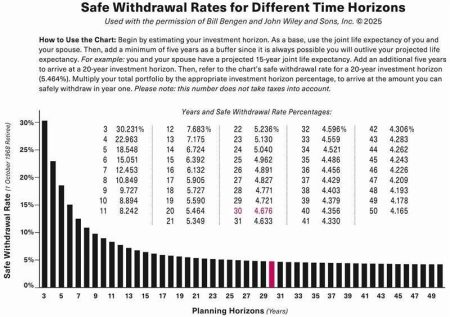Today’s Social Security COLA (Cost-of-Living Adjustment) means that about 75 million Americans just learned this morning that they will be receiving a 2.8% Social Security COLA increase (an average of $52 per month) starting in January 2026. This total includes retired workers, spouses, survivors, and people with disabilities, as well as some children. According to Pew Research Center children make up roughly 2% of all Social Security beneficiaries, while retirees and their spouses account for the vast majority.
Results from a Motley Fool survey published January 17, 2025 reveal that most people responded in a way that suggests a shrug of the shoulders and a chin pointed toward the ground in despair — because they told the Motley Fool that a COLA would not keep up with their own cost of living. An AARP survey (published October 9, 2024) reinforced the same sentiment, finding that most retirees do not believe the COLA adequately covers essential costs.
- 53% of Social Security recipients answered that they disagreed (strongly or somewhat) with the statement: “A 2.7% to 2.8% increase in Social Security benefits is sufficient to keep up with the cost of living.”
- 68% said the 2.8% COLA won’t cover essential living expenses such as healthcare, housing, and food.
- 54% said they have returned to work or are considering it due to inadequate Social Security benefits.
- 64% believe they need at least a 6% COLA to keep pace with rising costs due to inflation; nearly a third said they would need a 10% increase.
On average, women are affected more by inadequate COLAs than men because they live longer. Since a larger share of the oldest-old are women, they face a longer period over which fixed incomes are eaten away by inflation. Women aged 90 and older in the U.S. outnumber men by nearly three to one .
1. Lag in the Social Security COLA Makes Benefits Inadequate
The Social Security COLA is applied after inflation has already eroded purchasing power. The COLA was adopted by Congress in the 1970s because Americans agreed that, absent a COLA adjustment, inflation would leave some retirees destitute by the time they died. For example, a beneficiary who began with a $2,000 per month benefit 15 years ago would still get $2,000 today, but inflation would have reduced its value by 48% (based on cumulative CPI-W inflation between 2009 and 2024).
The adjustment happens after inflation has already done its damage.
If monthly checks were adjusted for inflation each month instead of annually, at 3% annual inflation evenly spread through the year, recipients would receive a higher check every month instead of waiting. The difference between an annual COLA and a monthly COLA at 3% annual inflation over 15 years is about $360 more per year, or roughly $30 per month — enough to pay a utility bill, fill a gas tank, or cover a prescription. $30 can mean a lot to an older person on a fixed income for life.
2. Rising Medicare Premiums Undermine the Social Security COLA
While the COLA increase is a welcome boost in a small benefit check, not many people realize — until they receive a Social Security check — that Medicare premiums are deducted from it. According to projections from AARP published August 12, 2025: ‘How Social Security COLA May Increase 2026 Benefits’), premiums could rise nearly 12%, from $185 in 2025 to an estimated $206.50 in 2026. For many retirees, this will offset the COLA raise. A retiree with a $2,000 monthly benefit might see a gross increase of $54, but after Medicare deductions, the net increase could be as little as $32.50.
Rising healthcare costs and congressional inaction make the COLA increasingly inadequate — confirming survey results by The Motley Fool and AARP that show most retirees feel the COLA fails to keep up with inflation. According to the Social Security Administration, the average monthly retired-worker benefit was about $2,008 as of August 2025, so the hypothetical $2,000 used here closely mirrors the actual average.
3. Using the Wrong Inflation Index Makes the Social Security COLA Inadequate
The Consumer Price Index for the Elderly (CPI-E) is a research index created by the Bureau of Labor Statistics (BLS) to track price changes for households aged 62 and older. Congress, after heavy lobbying from seniors and their families, directed the BLS to develop the new index in the 1987 amendments to the Older Americans Act to see if the hunch was right. Even though the CPI-E is more than not registering a higher inflation rate for seniors, the Social Security Administration still uses the Consumer Price Index for Urban Wage Earners and Clerical Workers (CPI-W) to calculate COLAs.
The CPI-E assigns greater weight to healthcare and housing — categories where older households spend more. If the CPI-E had been used since 1982, benefits would be significantly higher today. A $500 monthly benefit in 1982 would be about $1,440 using CPI-W, but roughly $1,555 under CPI-E — $115 more each month. Adding the $30 monthly difference from adjusting for inflation lag means benefits could be about $145 higher today.
Conclusion: Why the COLA Matters
These three problems — timing lag, Medicare premium offsets, and use of the wrong inflation index — explain why the Social Security COLA often fails to protect retirees’ purchasing power. Advocacy groups have pushed since the 1980s for a COLA formula that better reflects seniors’ real costs. With inflation squeezing budgets and the average Social Security benefit rising to just $1,917 per month, more than half of retirees face a retirement crisis. Eroding benefits increase financial stress, worsen health outcomes, and heighten the risk of poverty and homelessness among older Americans.
Next steps would be bold steps to improve Social Security. First increase revenues to restoring the solvency of the Social Security trust funds. Congress could consider issuing bonus payments to make up for the lag in COLA calculation, adopting the CPI-E index for older households, raising general revenue to reduce Medicare premiums for lower income people. Small Social Security checks is just one element of the looming retirement crises.
Each October, the Bureau of Labor Statistics (BLS) publishes the September CPI-W, which the Social Security Administration (SSA) uses to compute its three-month average (July–September) for the COLA calculation. At 3% annual inflation, the monthly inflation rate is approximately 0.2466%. Starting with $2,000 in month one, each month’s payment would increase by multiplying by 1.002466. After 12 months, the average monthly payment would be about $2,030 — a modest but meaningful improvement in real income for retirees. And based on cumulative growth factors of 2.88 for CPI-W and 3.11 for CPI-E between 1982 and 2024 I computed the difference in checks using the different calculators.
Read the full article here









